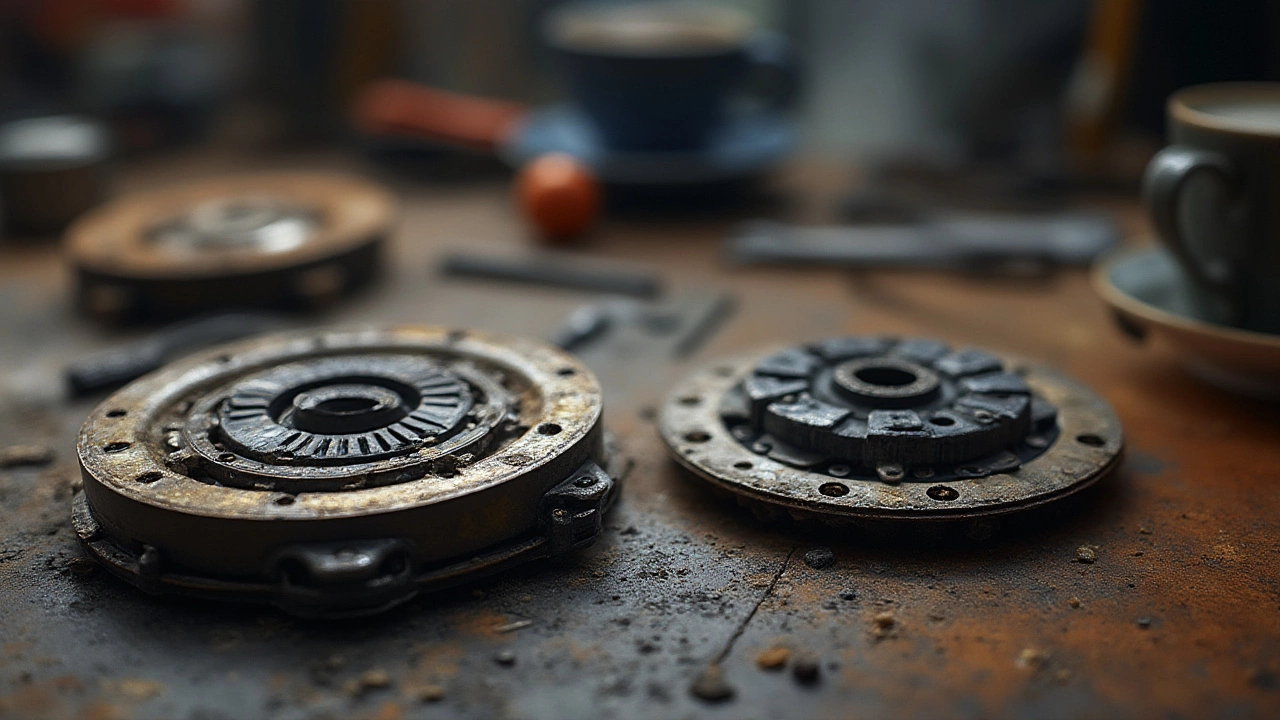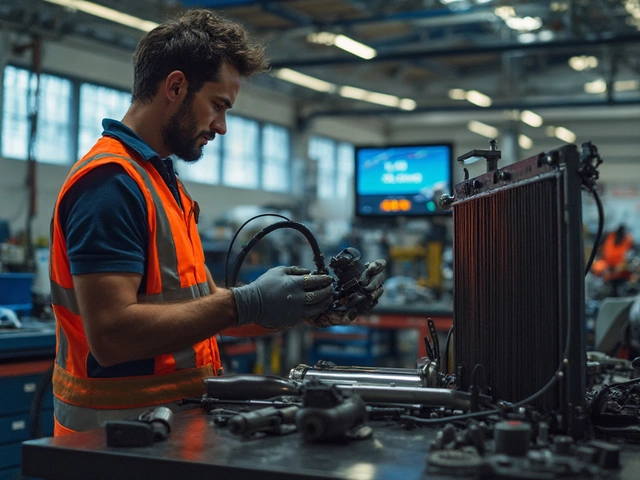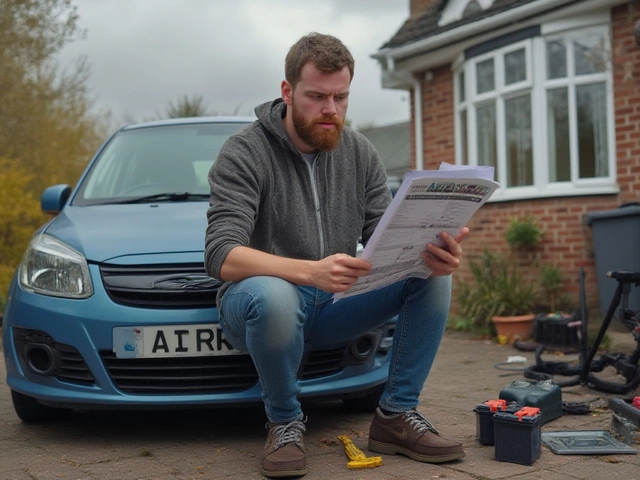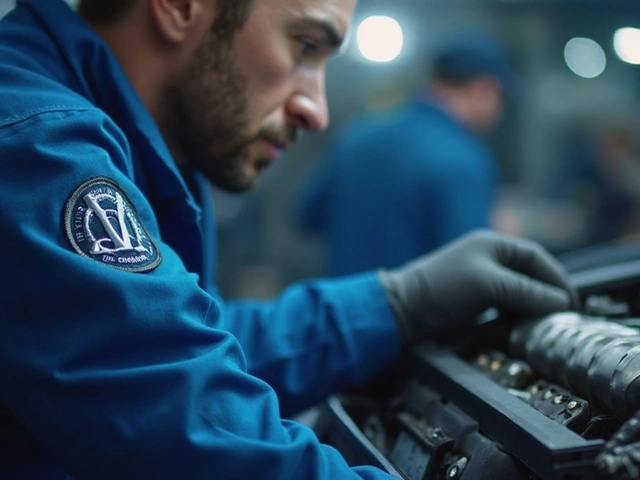That dreaded grinding or slipping when you shift gears? It’s not your imagination playing tricks. When your clutch starts acting up, stress kicks in right away—and for good reason. The clutch is the unsung hero of every manual car, and it doesn’t come cheap when it’s time to swap it out. Let’s get into what you’re actually signing up for when you ask, "How much is it to replace a clutch?" Sticker shock, real numbers, sneaky ways mechanics might pad costs, and smarter ways to save—all of it. Hang tight.
Why Do Clutches Wear Out, and How Can You Tell?
Alright, let’s break down why your manual transmission clutch doesn’t last forever. Every time you press the pedal, the clutch disc meets the spinning flywheel. It’s friction that saves the day, but friction also means wear—just like a pair of sneakers losing their tread after too many city blocks. If you’re heavy on the pedal (always resting your foot there, for example), or you drive a lot of stop-and-go traffic, your clutch is living a harder life. Some commuter cars might squeeze 100,000 miles out of a clutch, but aggressive driving or towing can shred that lifespan down to 40,000 miles or less.
The real trick is noticing clutch problems before you’re left cursing at a green light. Watch for these warning signs:
- Slipping: If the engine revs but you’re not picking up speed, the clutch could be shot.
- Hard or soft pedal: If it feels weird under your foot one day, that’s a red flag.
- Gear grinds: Trouble shifting into gear is a classic sign.
- Smelling something burnt: That burnt toast smell after driving is a dead giveaway.
- Vibrations or chattering when releasing the pedal.
Some people ignore these hints, chalking it up to “old car things.” The longer you put it off, the more likely you’ll rack up extra costs. If the clutch completely fails, you could get stuck somewhere. And worn clutches often damage other pricey parts, like the flywheel or transmission synchros. So, a stitch in time really does save nine (and lots of dollars).
What Actually Goes Into a Clutch Replacement?
This isn’t a simple job. Most people picture a quick swap like changing brake pads, but replacing a clutch is a different beast. It means splitting the engine from the transmission. There’s crawling under the car, removing half the exhaust, axles, and sometimes even subframes or motor mounts. Trucks and rear-wheel-drive cars can be a little more “mechanic friendly.” Compare that with front-wheel-drive compacts, and you’re looking at a puzzle of tight spaces.
Let’s talk about what gets replaced. A typical clutch kit comes with these three parts:
- Clutch disc: The friction material that wears out.
- Pressure plate: Holds the clutch disc against the flywheel when engaged.
- Release bearing: Allows the pressure plate to disengage smoothly.
If the flywheel looks glazed, scored, or damaged, most shops will either resurface or replace it. Hydraulic systems sometimes need a new slave or master cylinder, and some clutches use cables that occasionally snap. Labor is by far the biggest chunk of your bill. On average, the job takes 4-10 hours, and hourly rates swing from $75 to $200 depending on the shop and your location.
The techs will also recommend switching out cheap but pesky parts while everything’s apart—think pilot bearings or rear main oil seals. Skimping here will save $50 now, but might cost you a whole new clutch job next year. No fun.

So, How Much Does Clutch Replacement Really Cost?
Here’s what everyone actually wants to know—and it’s not a simple "one number fits all" answer. The range is wide, and it depends on your car, location, and whether you go for OEM (original equipment) or aftermarket parts. Let’s break it down with a table for quick comparison, based on real repair shop data from 2024:
| Vehicle Type | Parts Cost (USD) | Labor Hours | Total Cost (Range) |
|---|---|---|---|
| Small/mid-size sedan | $150-$400 | 4-6 | $600-$1,200 |
| Sports car / performance | $300-$700 | 5-9 | $1,000-$2,500 |
| Truck/SUV (RWD) | $250-$600 | 5-8 | $800-$1,800 |
| European luxury | $400-$900 | 7-10 | $1,200-$3,500 |
In big cities, labor rates are brutal. Dealerships? Expect to pay 25-40% more than an independent shop. But if your car is still under warranty or needs flash updates (crazy as that sounds for a clutch job), a dealership is sometimes worth it.
If you’re driving an older economy car that isn’t worth much, think about the numbers. If the *clutch replacement cost* is half of what your car is worth, it might be time to rethink things. But—if your vehicle’s in great shape otherwise, a new clutch can easily buy you another five years or 100,000 miles.
Here’s a quick pro tip: Ask the mechanic for the "out-the-door" price. That’ll help you avoid surprises like new bolts, fluids, or “shop miscellaneous” fees. And don’t be shy about getting two or three quotes (some shops offer price-matching or discounts if you mention a competitor).
Ways to Save—And What Doesn’t Work Out
Everybody wants to cut costs, but there are smart and not-so-smart ways to go about it. Here’s how to keep more cash in your pocket without risking a nightmare:
- DIY repairs are possible for the mechanically inclined, especially on older trucks. But if you don’t have a proper lift, transmission jack, and a half-day blocked off, you might be biting off more than you can chew.
- Shop around for parts. Aftermarket clutch kits from reputable brands like LUK, Exedy, or Sachs are often just as good—or occasionally better—than what came with your car. Just don’t grab the cheapest knockoff online; spend a few extra bucks for a name brand. If you want, you can supply your own parts to a shop, but always double-check compatibility. Some shops hate this, so ask before bringing your own kit.
- If your shop or dealer pushes a "flywheel replacement" right away, ask if resurfacing is a safe option. You could save $150-400, and in many cases, resurfacing is more than enough.
- Look for specialty shops. A place that mostly works on clutches and transmissions (think high-volume chain repair centers) may offer lower labor rates and faster turnaround.
- Catch problems early. If you notice slipping or that weird burnt smell, acting fast can mean replacing just the clutch disc—not a ruined flywheel or fried transmission.
- Think about bundles. If your ride needs other repairs—rear main seal, transmission mount, or an oil pan gasket—doing them all during the same clutch job can save hundreds in repeated labor charges.
One move that usually doesn’t pay off? Used clutches or parts from junkyards. You have no idea how much life those parts have, and a failed clutch puts you right back at square one—plus labor, again. It’s tempting, but rarely worth the gamble.

How To Make Your Clutch Last Longer Next Time
So you’ve forked over the cash and got your car back—good as new. Nobody wants to repeat the process anytime soon, so how do you stretch that new clutch’s lifespan as far as possible?
- Stop riding the clutch. Rest your foot off the pedal when you’re not shifting, plain and simple.
- Use the handbrake on hills instead of balancing with the clutch. That little habit—called “slipping”—kills clutches faster than you think.
- Shift smoothly. Quick, choppy gear changes make the clutch work harder.
- If you love spirited driving, save full-throttle launches for rare occasions.
- Get in and out of first gear quickly—don’t drag it out at every light.
- Stay on top of any small issues—leaky hydraulic cylinders or strange pedal feel are good excuses for a professional check-up.
Here’s a fun fact: There are folks who’ve managed 200,000+ miles on the factory clutch, just by driving gently and thinking ahead. It’s all about minimizing heat and avoiding extra friction whenever you can.
If you’re facing clutch replacement, it’s not the end of the world. Yes, it hurts the wallet, but a professionally installed clutch can absolutely bring your car back to life. Treat the new clutch with care, and you might not have to worry about this fix again for a decade—or more.






